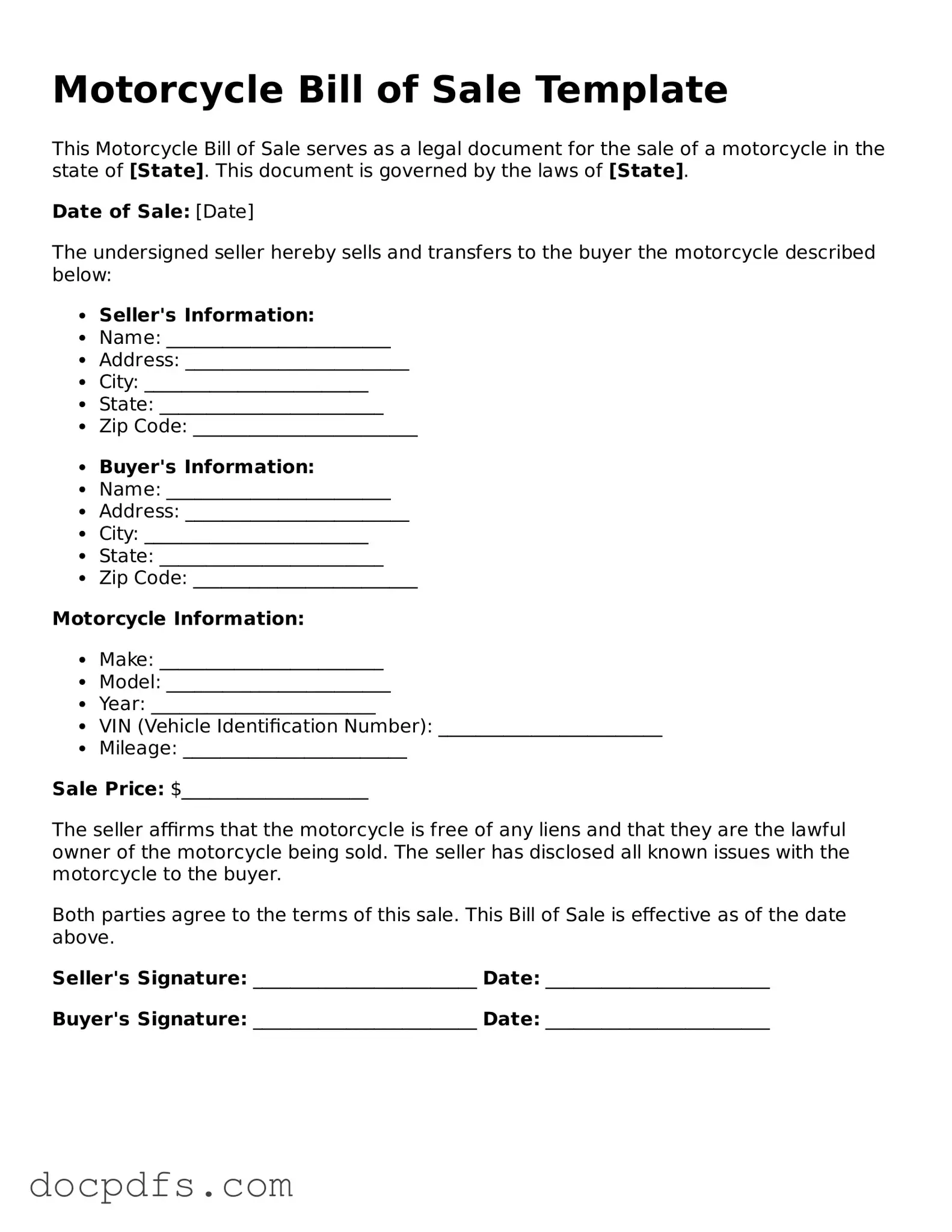Legal Motorcycle Bill of Sale Document
A Motorcycle Bill of Sale is a legal document that records the transfer of ownership of a motorcycle from one party to another. This form serves as proof of the transaction and includes important details such as the motorcycle's make, model, and Vehicle Identification Number (VIN). Having a properly completed bill of sale protects both the buyer and seller in the event of future disputes.
Open Motorcycle Bill of Sale Editor Now
